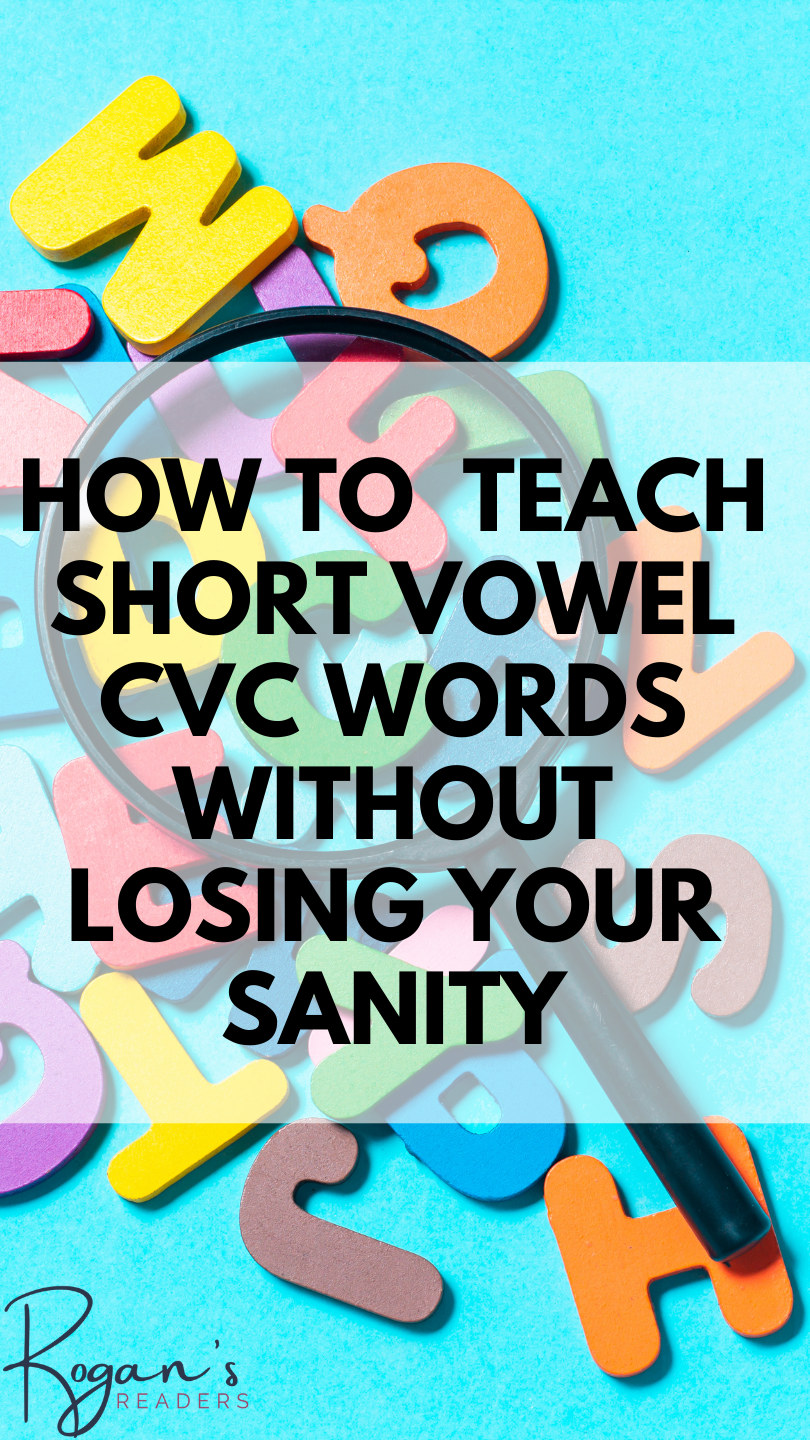Let’s be real—teaching phonics can sometimes feel like you’re stuck in an endless loop of worksheets, chants, and vowel sound drills. And as much as we love our boxed curriculum (insert heavy sarcasm here), sometimes it feels like we’re stuck navigating a maze trying to find something, anything, remotely engaging for our students. Sound familiar?

If you’ve ever found yourself aimlessly scrolling through a curriculum site, wondering if there’s actually a fun way to teach CVC short vowel words, you’re not alone. But don’t worry, I’ve got you covered with some practical (and fun) ways to keep your students engaged without losing your mind.
First Things First:
What Are We Teaching Again?
In case your coffee hasn’t kicked in yet (no judgment here), let’s quickly review what CVC words are. CVC stands for Consonant-Vowel-Consonant, and they’re basically the building blocks of reading. Think of words like cat, sit, and hop. These one-syllable words with short vowel sounds help kids practice decoding, which is just a fancy term for reading without guessing.
While boxed curriculums love to tell us that phonics is “easy to teach,” it’s not always easy to keep kids interested in what can feel like the same old thing day after day. And that’s where we teachers have to get creative.
Why Boxed Curriculum Sometimes Misses the Mark
You know what’s fun? Teaching! You know what’s not fun? Trying to figure out which tab of your district’s curriculum website hides the materials you actually need (seriously, why so many tabs?).


Boxed curriculum, in theory, is supposed to make our lives easier, but often, it’s the opposite. Sometimes the materials are either hard to find, bland (hello, black-and-white worksheets!), or just not adaptable for all our different learners. The struggle is real.
This is why so many of us end up supplementing with resources we find elsewhere, searching for things that will bring some life back into our phonics instruction. Because let’s face it: we want something that not only helps students master their short vowels but actually gets them excited to learn.
So, How Can We Make Teaching CVC Words Fun?
Glad you asked! Here are a few tried-and-true tips to make phonics fun and engaging (and spoiler alert: no, it doesn’t involve scouring your curriculum’s website for hours).
1. Turn Your Classroom into a Phonics Game Show
Picture this: You’re the host of “Phonics Showdown,” and your students are the contestants. Whether you use clip cards, a word sort race, or a good old-fashioned read-the-room activity, turning learning into a game can seriously amp up the fun.


Students love competition, and whether it’s team vs. team or individual practice, gamifying CVC short vowel learning keeps them engaged. Plus, they’ll barely notice they’re mastering those CVC short ‘I’ words (sneaky, right?).
2. Phonics Meets Creativity: Craft Time
Who said learning CVC words has to be boring? Get the crayons, scissors, and glue sticks ready because a CVC word craft can take things to the next level. Have students color-code words, create word collages, or build mini short ‘O’ CVC word posters.
Crafts tap into creativity, and when students are in charge of cutting and pasting their words together, they’re much more likely to retain the material.
3. Reading, Writing, and Moving
Okay, let’s admit it: asking a group of energetic kiddos to sit still and do worksheets all day is like asking a cat to take a bath. It’s just not going to happen. Instead, incorporate activities like Read/Write the Room to get them up and moving while practicing those CVC short vowel words.


They can walk around the room with clipboards, finding words on posters, and writing them down as they go. And if you want to up the fun? Add in some dance breaks between rounds. You’ll thank me later.
4. Collaborative Learning: Let Them Build Together
Some students thrive when they work together. Activities like I Have, Who Has? make phonics collaborative and a little competitive in the best way possible. These interactive games are great for building classroom community while reinforcing skills.
5. Keep It Fresh with No-Prep Activities
And lastly, the holy grail of phonics teaching: no-prep printables. Because as much as we love creating crafts and games, there are days when we need something quick and ready to go. These resources let you grab-and-go without the headache of prepping materials for hours.
You can keep things exciting with word sorts, fill-in-the-blank sentences, and even mini skill books—all designed to make learning CVC short vowel words fun and engaging.
You Don’t Have to Be a Superhero to Make Phonics Fun
Look, we all want our students to enjoy learning. And while the boxed curriculum might give us the basics, we know our students need more to keep them excited. With the right activities—whether it’s games, crafts, movement, or no-prep printables—you can teach CVC short vowel words in a way that makes students want to learn.
So next time you’re stuck in the black hole of your curriculum’s website, take a deep breath and remember: there are easier (and more fun!) ways to make phonics exciting.
And if you’re looking for a ready-made pack of engaging, teacher-approved phonics activities (because, let’s be honest, who isn’t?), I’ve got just the thing. No pressure, though. 😉
“Ready to make phonics fun? Check out these ready-to-use resources.”













